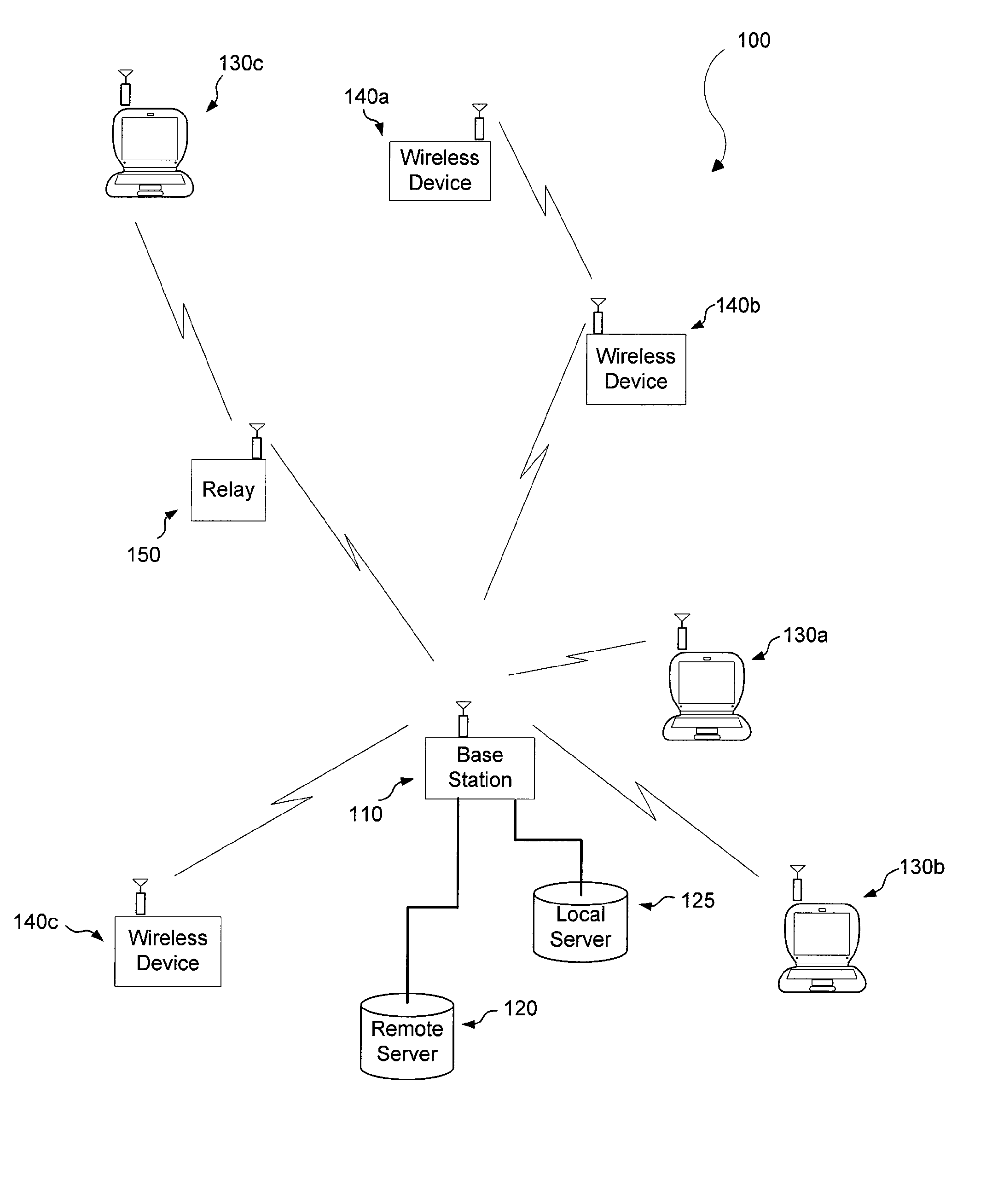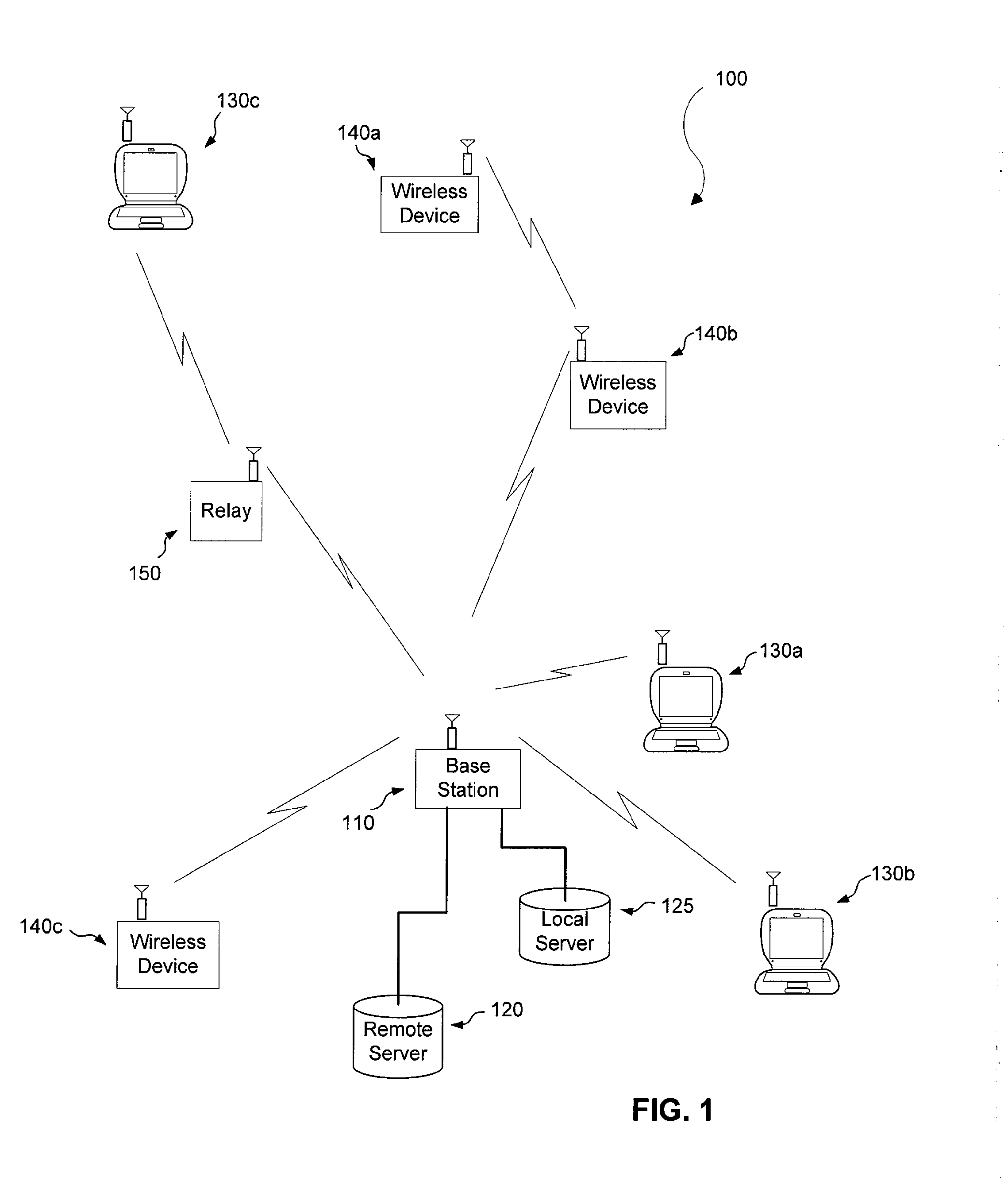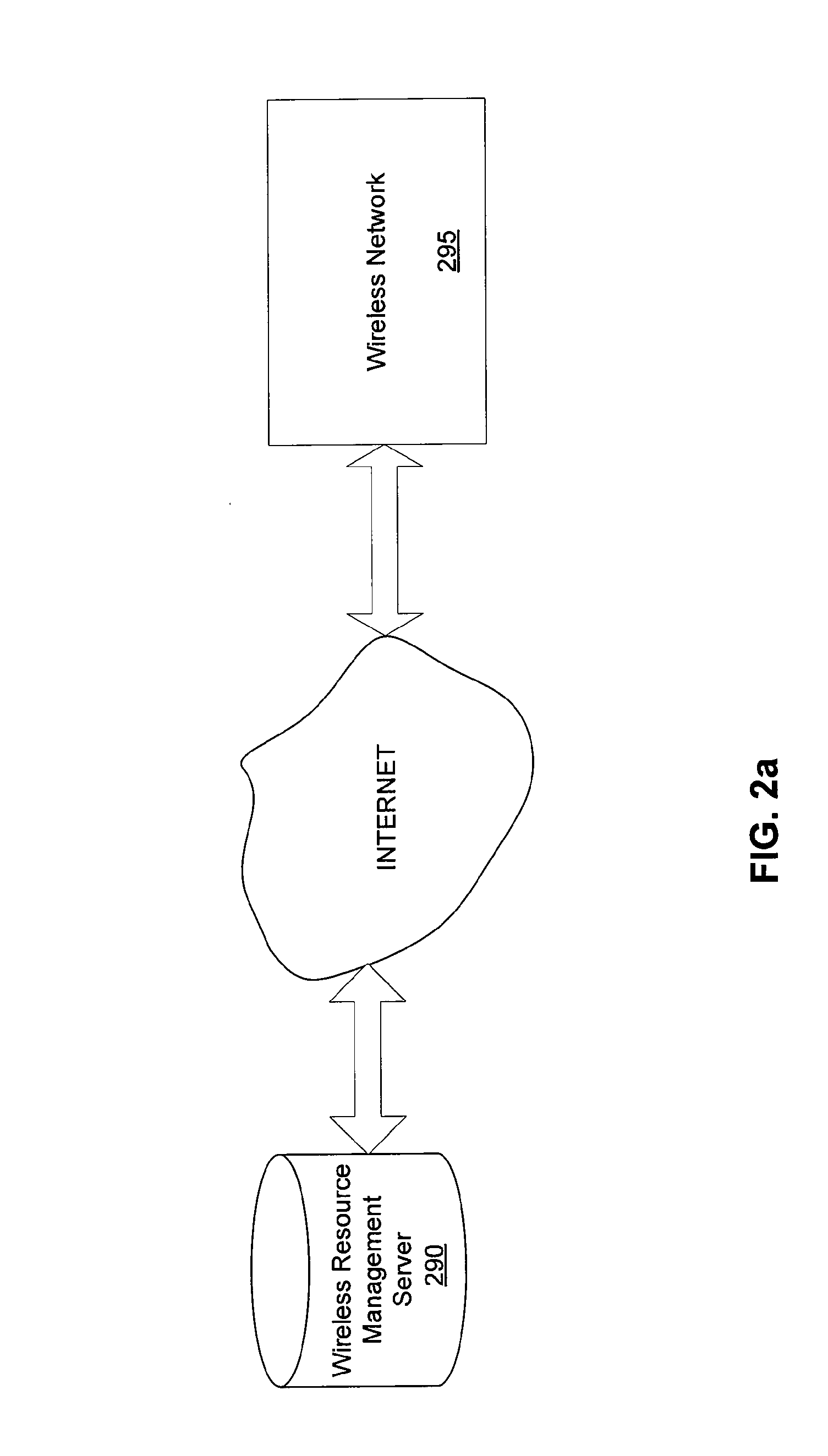Systems and methods for wireless resource management with quality of service (QOS) management
a wireless resource management and quality of service technology, applied in the field of systems and methods for wireless resource management with quality of service (qos) management, can solve the problems of new problems in configuration, provisioning and management, high latency, and decreased network performan
- Summary
- Abstract
- Description
- Claims
- Application Information
AI Technical Summary
Benefits of technology
Problems solved by technology
Method used
Image
Examples
example 1
ILLUSTRATIVE EXAMPLE 1
RF Interface Control
[0187] In an embodiment of a optimization application for RF interference control, the application may receive input primitives such as power / noise levels, error rates, or other parameters related to the RF channel or interface for its computational algorithm and associated processes, and then provide output primitives such as power level and / or channel number that will be need to be changed on the device by SET operations. For example, as shown in FIG. 21 the primitives associated with power / noise levels may be provided from manager 4322 to optimization algorithm module 4312, which then provides the power level, channel information, or other RF related parameters back to the management and control manager for further processing and / or transmission via agents to network resources such as base stations, access points, and wireless devices.
example 2
ILLUSTRATIVE EXAMPLE 2
A Reporting and Visualization Application
[0188] In an embodiment of a reporting and visualization application, the application may present received input primitives in a human readable format such as a text or graphical representation of the information and / or events, or information and / or data stored in one or more files in a computer readable / displayable / printable format. This may include information about particular device configuration, performance, transmitted or received data, overall network performance metrics, or other information related to device or network operation or data suitable for reporting or visualization.
[0189] In some embodiments, a management and control manager module or modules may be provided as a software application / controller that may be deployed within the managed network, such as at a base station, access point, router, repeater, smart antenna system, proxy appliance, and central server / controller, as dictated by the specific us...
PUM
 Login to View More
Login to View More Abstract
Description
Claims
Application Information
 Login to View More
Login to View More - R&D
- Intellectual Property
- Life Sciences
- Materials
- Tech Scout
- Unparalleled Data Quality
- Higher Quality Content
- 60% Fewer Hallucinations
Browse by: Latest US Patents, China's latest patents, Technical Efficacy Thesaurus, Application Domain, Technology Topic, Popular Technical Reports.
© 2025 PatSnap. All rights reserved.Legal|Privacy policy|Modern Slavery Act Transparency Statement|Sitemap|About US| Contact US: help@patsnap.com



